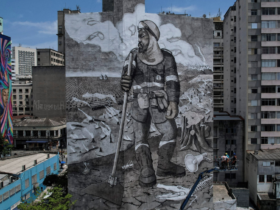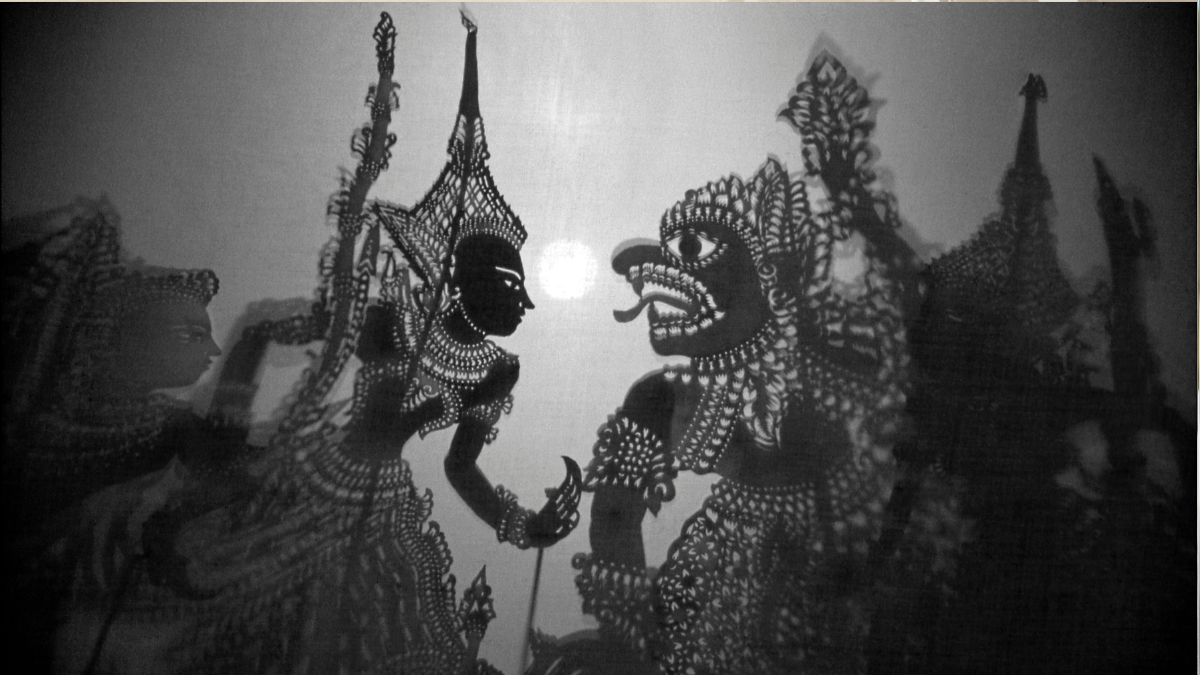The Lost Art of Shadow Puppetry
The Lost Art of Shadow Puppetry: Explore the historical significance, origins, cultural significance, techniques, and preservation efforts of this ancient art form that reflects unique storytelling traditions and cultural insights.

The Lost Art of Shadow Puppetry
Shadow puppetry, with its deep historical roots, has been a significant form of cultural and artistic expression across various civilizations. Originating in ancient China, this art form has evolved over centuries, adapting to different societal needs and entertainment preferences while maintaining its core essence. While shadow puppet shows were primarily a source of entertainment, they also served as a medium for [conveying moral lessons](https://salemtheatrenetwork.org/unmasking-the-charm-the-lost-art-of-shadow-puppetry) and historical narratives, enriching the cultural tapestry of communities.
One fascinating example of the evolution of shadow puppetry is the rich storytelling tradition found in Turkey, China, and Indonesia. Each culture developed unique techniques and styles, such as Turkey’s Karagöz and Hacivat, China’s intricate shadow puppetry, and Indonesia’s Wayang Kulit. These shadow theaters not only showcase the craftsmanship of creating intricate puppets but also offer insightful glimpses into the cultural nuances and storytelling traditions of each region. The characters in Turkish shadow puppetry, like Karagöz and Hacivat, represent societal archetypes and provide comedic relief, illustrating how shadow puppetry serves as a reflection of societal norms and values.
Moreover, the craftsmanship involved in creating traditional shadow puppets is a testament to the cultural significance attached to these art forms. Crafted with intricate details, these puppets often reflect cultural symbols, folklore, and historical narratives unique to each region. The use of specific materials, such as animal hides and leather in [crafting these puppets](https://ich.unesco.org/en/RL/wayang-puppet-theatre-00063), adds a tactile and visual dimension to the performances, enhancing the audience’s immersive experience and highlighting the artistry passed down through generations. Through the preservation and revitalization efforts of shadow puppetry, these cultural treasures continue to captivate audiences worldwide, bridging the past with the present and ensuring that this ancient art form endures for future generations to appreciate.
I. Historical Significance of Shadow Puppetry
Shadow puppetry has been an integral part of cultural and artistic expression in numerous civilizations, each contributing unique storytelling traditions and cultural insights. From ancient times to the modern era, this captivating art form has undergone transformations to adapt to evolving societal demands and preferences while retaining its core characteristics. Notably, shadow puppet shows have not only been a source of entertainment but also a means of conveying moral values and preserving historical stories, enriching the cultural tapestry of societies.
In exploring the historical roots of shadow puppetry, it is fascinating to note that its origins trace back to ancient China, where it was initially utilized for religious rituals and later evolved into a form of entertainment. Over time, various regions such as Turkey, Java in Indonesia, and Cambodia have developed their distinct styles and techniques in shadow puppet theater, showcasing the diverse and rich heritage of this art form [3, 5]. For instance, the shadow theaters of Turkey, with iconic characters like Karagöz and Hacivat, provide insights into societal archetypes and offer comedic elements in their performances, reflecting the cultural nuances embedded in the art. Such examples highlight the depth of storytelling and the cultural significance intertwined with traditional shadow puppet shows.
 II. Origins and Evolution of Shadow Puppetry
II. Origins and Evolution of Shadow Puppetry
Shadow puppetry, with its roots traced back to ancient China, presents a fascinating tapestry of cultural heritage and artistic expression. The ancient Chinese used shadow puppetry not only for entertainment but also as a significant element in religious rituals, making it a multifaceted art form deeply embedded in their traditions. As the art form spread to various corners of the world, it underwent a process of evolution, adapting to the unique cultural landscapes it encountered. For example, in Turkey, shadow puppetry took on the form of Karagöz and Hacivat, embodying societal archetypes and providing comedic relief in performances.
Moreover, the evolution of shadow puppet theaters in different regions such as Java (Indonesia) and Cambodia showcases the diverse techniques and storytelling traditions that have enriched this ancient art form. In Java, the Wayang Puppet Theatre mesmerizes audiences with its elaborate puppets and complex musical styles, drawing from indigenous myths and epics to create enchanting performances. Similarly, in Cambodia, Mann Kosal’s revival of large shadow puppetry not only honors the ancient art dating back to pre-Angkorian times but also serves as a poignant reminder of the resilience of cultural traditions in the face of adversity. These examples underscore how shadow puppetry has adapted and thrived in various cultures, embodying centuries-old storytelling legacies while embracing contemporary influences.
III. Cultural Significance of Traditional Shadow Puppets
Traditional shadow puppets hold immense cultural significance as they are not merely artistic creations but also embodiments of societal values and historical narratives. These puppets are meticulously crafted with intricate details that reflect a deep connection to cultural symbols, folklore, and traditions, making them essential carriers of a community’s heritage and identity. For example, in Wayang Kulit performances in Indonesia, the characters not only entertain but also convey moral lessons and historical events, fostering a sense of shared history and collective learning.
Moreover, specific characters within traditional shadow puppetry, such as Karagöz and Hacivat in Turkish shadow puppet theater, play pivotal roles in representing societal archetypes and providing comedic relief during performances. These characters are not just puppets but reflections of cultural norms, values, and humor, adding layers of depth and relatability to the art form. The audience connects with these characters on a personal level, recognizing familiar traits and behaviors that resonate with their own experiences, thus creating a profound cultural exchange and emotional engagement. Additionally, the utilization of materials like animal hides and leather in the construction of shadow puppets enriches the visual and tactile appeal of the performances, offering a sensory experience that immerses spectators in the storytelling process [4, 5].

IV. Techniques and Craftsmanship in Shadow Puppetry
Shadow puppetry is a meticulous art form that involves intricate techniques to bring the puppets to life on the screen. Puppeteers master the art of manipulating the puppets behind a lit screen, skillfully maneuvering them to create dynamic movements and convey expressive gestures that captivate audiences. For example, in Turkish shadow puppetry, the characters of Karagöz and Hacivat are brought to life through these techniques, each representing societal archetypes and engaging in comedic performances that have entertained generations.
The craftsmanship required in creating shadow puppets is a blend of artistry and technical skill that demands attention to detail. From the initial design phase to the delicate cutting and articulation of the puppets, every step plays a crucial role in the final presentation on the shadow theater screen. For instance, in Chinese shadow puppetry, the use of colorful, semi-transparent puppets made from animal skins like cow, donkey, and mule showcases the rich heritage and historical evolution of the art form, dating back over a thousand years. These puppets are not just figures but embodiments of cultural symbols, folklore, and historical narratives, making them integral to the storytelling tradition of shadow puppet theaters around the world.
V. Preservation and Revival Efforts in Shadow Puppetry
In the contemporary era, the preservation and revival of traditional shadow puppetry have become paramount, with a focus on adapting this ancient art form to resonate with modern audiences while safeguarding its cultural legacy. An excellent example of this adaptation is seen in the collaboration between Christopher Myers and Indonesian craftsmen for the performance Fire in the Head, where traditional shadow puppets were used to narrate the story of Vaslav Nijinsky, bridging the gap between historical tales and present-day artistic expressions. Similarly, organizations like Chinese Theatre Works and ShadowLight Productions in the United States are at the forefront of reviving traditional shadow puppetry by infusing innovative techniques and themes to captivate contemporary viewers. These initiatives not only breathe new life into shadow puppetry but also underscore the importance of cultural continuity and artistic heritage in a rapidly evolving world.
Moreover, the efforts to preserve shadow puppetry extend beyond artistic collaborations and performances. Visionaries like Jianbo Peng in China are diligently working on the creation of an extensive online archive housing thousands of shadow-puppet images and videos, ensuring that the intricate craftsmanship and storytelling techniques associated with this art form are documented and accessible for future generations. Additionally, advocates like Rahul Pulavar from India are pioneering an “intermedial process” that merges traditional shadow puppetry with modern technologies, safeguarding the essence of the ancient art while embracing the advancements of the digital age. These preservation endeavors not only honor the rich cultural tapestry woven by shadow puppetry but also pave the way for its continued relevance and appreciation in the global artistic landscape.
Also read about our post on Merging Art and Ecology: The Ilha de Queimada Grande Mural in São Paulo, Brazil









































